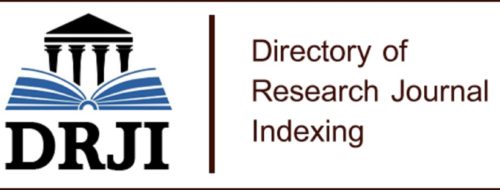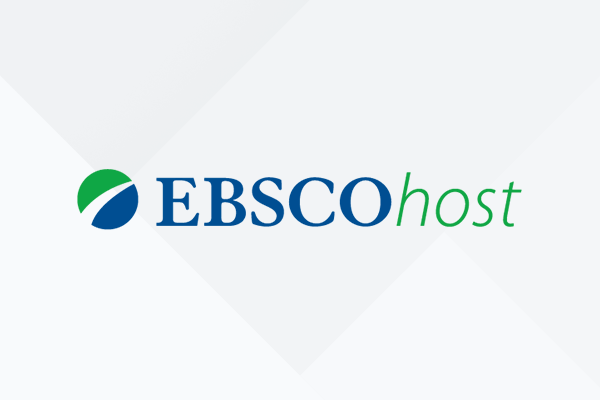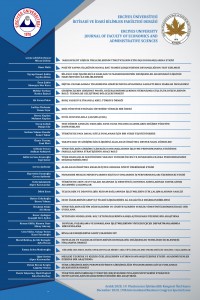Abstract
Bireysel özelliklerden birisi olan yaratıcılık bireyin kariyer sürecinde farklı şekillerde ortaya
çıkmaktadır. İşletmecilik bağlamında yaratıcılıkların bireysel ve yönetsel yansıması hem bireyin hemde
işletmenin vizyonunun önemli bir parçasıdır. Rekabet ve yenilikçiliğin öne çıktığı girişimcilik odaklı
günümüz iş yaşamında çalışanların ya da yöneticilerin yaratıcılıklarının girişimcilik odağında
yönlendirilmesinin ne derece etkili olduğu konusu önemli bir sorun alanıdır. Nitekim yaratıcılık
özelliğinin varlığı ile kullanımı bireyin olduğu kadar yönetici ve liderlerin uygulamaları sonunda iş
yaşamına yansıtılabilmektedir. Yaratıcılığın girişimciliğin önemli bir girdisi doğal bir beklenti olsa da
girişimci bir ortamın yaratıcılığın ortaya çıkmasında önemli bir rolü olduğu düşünülmektedir. Bu
kapsamda yaratıcılık girişimcilik ilişkisini belirlemek ve bu ilişkide algılanan örgütsel desteğin rolünü
ortaya koymak bu çalışmanın temel sorunsalı olarak belirlenmiştir. Araştırma kapsamında yaratıcılık girişimcilik ve algılanan örgütsel destek ilişkilerini test etmek maksadıyla Antalya’da faaliyet gösteren yazılım sektöründe çalışanlar üzerinde (n=350) ampirik bir çalışma yapılmıştır. Araştırma sonucunda
önemli bulgulara ulaşılmıştır. YEM ile yapılan yol analizleri ile en uyumlu model belirlenmeye
çalışılmıştır. Elde edilen bulgular yaratıcılığın girişimciliği pozitif yönde etkilediğini ve algılanann
örgütsel desteğin bu ilişkide düzenleyici rolü olduğunu göstermiştir.
References
- Abdollahi, F., Piri M., Azimi M., (2013). The relationship between perceived organizational support and organizational commitment among faculty members, Australian Journal of Basic and Applied Sciences, 7/4, 475-479.
- Akkoç, İ., Turunç, Ö. ve Çalışkan, A. (2011). Örgütsel performansın artırılmasında motivasyonel davranışların rolü: Yenilikçilik ve girişimciliğin aracılık rolü, SDÜ İİBF Dergisi
- Armeli, S. , Eisenberger, R., Fasolo, P., Lynch, P., (1998). Perceived organizational support and police performance: the moderating influence of socioemotional needs, Journal of Applied Psychology, 83, 288-297.
- Armeli, S., Eisenberger, R., Fasolo, P., ve Lynch, P. (1998). Perceived organizational support and police performance: The moderating influence of socioemotional needs. Journal of Applied Psychology, 83(2), 288-297.
- Avey, J.B., Reichard, R.J., Luthans, F. , Mhatre, K.H., (2011). Meta-analysis of the impact of positive psychological capital on employee attitudes, behaviors, and performance, Human Resource Development Quarterly, 22/2, 127- 152.
- Baden, M. A. (1994). Dimensions of Creativity, London: The MİT Press.
- Baer, J. (1993). Creativity and Divergent Thinking, New Jersey: Lawrenge Erlbaum Ass.Inc.
- Baron, R. A.ve Tang, J. (2009). The role of entrepreneurs in firm-level innovation: Joint effects of positive affect, creativity, and environmental dynamism, Journal of Business Venturing s.12
- Baron, R. M. & Kenny, D. A. (1986. The moderator mediator variable distinction in social psychological research: Conceptual, strategic, and statistical considerations. Journal of Personality and Social Psychology, 51,1173- 1182.
- Bozkurt, Ö.Ç., Kalkan, A., Koyuncu, O. ve Alparslan, A.M. (2012). Türkiye’de girişimciliğin gelişimi, SD Üniversitesi SBE Dergisi, 1(15), 229-247.
- Brazeal, D. V. (1999). The genesis of entrepreneurship, Entrepreneurship, theory and pratice, 23:29-46.
- Bridge, S. vd. (l998). Understanding Enterprise, Entrepreneurship And Small Business, London: Macmillan Business.
- Dasgupta, S. (1994). Creativity in Invention and Design, New York: Cambridge University Press.
- Dollinger, M. J. (1999). Entrepreneurship, Second Edition, Prentice Hail Inc.
- Eisenberger, R., Armeli, S., Rexwinkel, B., Lynch, P.D., Rhoades, L. (2001). Reciprocation of perceived organizational support, Journal of Applied Psychology, 86/1, 42-51.
- Eisenberger, R., Fasolo, P., Davis-Lamastro, V., (1990). Perceived organizational support and employee diligence, commitment and innovation, Journal of Applied Psychology, 75, 51-59.
- Eisenberger, R., Fasolo, P., Davis-Lamastro, V., (1990). Perceived organizational support and employee diligence, commitment and innovation, Journal of Applied Psychology, 75, 51-59.
- Eisenberger, R., Huntington, R,, Hutchison, S., ve Sowa, D. (1986). Perceived organi¬zational support. Journal of Applied Psychology, 71.500-507.
- Eisenberger, R., Huntington, R., Hutchison, S., Sowa, D., (1986). Perceived supervisor support, Journal of Applied Psychology, 71/3, 500-507.
- Eisenberger, R., Huntington, R., Hutchison, S., Sowa, D., (1986). Perceived supervisor support, Journal of Applied Psychology, 71/3, 500-507.
- Eroğluer, K., Mert, İ., S. (2020). Türkiye’de İnovatif Girişimciliğe Esas Yaratıcı Fikirlerin Ortaya Çıkışında Etkili Faktörlerin Belirlenmesine Yönelik Keşfedici Nitel Bir Araştırma, İşletme Araştırmaları Dergisi, 12 (2), 1722- 1738.
- Eser, G., (2011). Güven eğiliminin algılanan örgütsel destek üzerindeki etkisi, Marmara Üniversitesi İ.İ.B.F. Dergisi, XXX/I: 365-376.
- Evans, J. R. (1991). Creative Thinking: in The Decision And Management Sciences, Sought Western Ohio: Publishing Company.
- Ford, C. M., ve Gioia D. A. (1995). Creative Actions in Organizations, London: Sage Publications.
- Garg, S., ve Dhar, R. (2014). Effects of Stress, LMX and Perceived organizational support on service quality: Mediating effects of organizational commitment. Journal of Hospitality and Tourism Management (21), 64- 75.
- George, J.M., Reed, T.F., Ballard, K.A., Colin, I., Fielding, I., (1993). Contact with AIDS patients as a source of work-related distress: effects of organizational and social support, Academy of Management Journal,, 36, 157-171.
- Gundry, L. K. and Kickul J. R.. (1996). Flights of imagination fostering creativity through experimental learning, Simulation and Gaming, 27: 334-350.
- Gutierrez, A., Candela, L., Carver, L., (2012). The structural relationships between organizational commitment, global job satisfaction, developmental experiences, work values, organizational support, and person organization fit among nursing faculty, Journal of Advanced Nursing, 68/7. 1601-1614.
- Hisrich, R. D.ve Peters, M. (2001). Entrepreneurship, 5th Ed., McGraw-Hill Higher Isaksen, M. (1993). Understandingand reccgnizing creativity, New York: Ablex Publishing Cor.
- İyidemirci, H. (2019). Girişimcilik ve inovasyon stratejilerinin ülke kalkınmasına etkileri: Desteklenen girişimcilik ve inovasyon kültürünün rekabetçi üstünlük elde etmede aracı rolü. Gazi Üniversitesi Sosyal Bilimler Enstitüsü Doktora Tezi. Ankara.
- Kao, J. (1989). Entrepreneurship Creativity Organization, New Jersey: Prentice HailIne.
- Kline, R. B. (1998). Principles and practice of structural equation modeling. New York: The Guilford Press.
- Korkmaz, S. (2000). Girişimcilik ve üniversite öğrencilerinin girişimcilik özelliklerinin belirlenmesine yönelik bir araştırma, H. Ü. İktisadi ve İdari Bilimler Fakültesi Dergisi, 18, 163-179.
- Kuratko, D. F ve Hodgetts, R. M. (1992). Entrepreneurship: A contemporary approach, New York: The Dryden Press.
- Kuratko, D. F. ve Hodgetts, R. M. (2001). Enterpreneurship–A contemporary approach. New York, Delmer Publishing.
- Lewis, B. (1997). If The Entrepreneurs Hat Fits, Learn Your Companys Needs Before Wearing, InfoWorld, 19: 80-90.
- Luthans, F., Norman, S.M., Avolio, B.J., Avey, J.B., (2008). The mediating role of psychological capital in the supportive organizational climate-employee performance relationship, Journal of Organizational Behavior, 29, 219- 238.
- May, R. (1976). The Courage to Create, New Jersey: Bantom Books.
- Mert İ.,Güney S. ve Güney S. (2009). Girişimcilik sürecinde yenilik ve yaratıcılık ilişkisi. T.C. Anadolu Bil Meslek Yüksekokulu Dergisi, 12(1), 17-39.
- Mert, İ. S. (1997). Karar vermede yaratıcı problem çözme teknikleri, Yayımlanmamış Yüksek Lisans Tezi, M.Ü.Sos.Bil.Ens.İşletme Anabilim Dalı, İstanbul.
- Morris, M., Davis, H. ve Duane E. (1994). Fostering corporate entrepreneurship: Cross-cultural comparisons of the importance of individualism versus collectivism, Journal of International Busines Studies, 16, 23 467.
- Naffziger, D. (l995), Entrepreneurship: A Person Based Theory Approach, Advances in Entrepreneurship, Firm Emergence, And Growth, Volume 2, JAI Pres Paulus
- Nitesh, S., Nandakumar, V.M., Asok, K.S., (2013). Role of pay as perceived organizational support contributes to employee’s organizational commitment. Advances in Management, 6/8, 52-54.
- Noruzy, A., Shatery, K., Rezazadeh, A., Hatam, L., (2011). Investigation the relationship between organizational justice, and organizational citizenship behavior: the mediating role of perceived organizational support, Indian Journal of Science and Technology, 4/7, 842-847.
- Özdevecioğlu, M., (2003). Algılanan örgütsel destek ile örgütsel bağlılık arasındaki ilişkilerin belirlenmesine yönelik bir araştırma, D.E.Ü.İ.İ.B.F. Dergisi, 18/2, 113-130.
- Pearce, C. L. (1997), The determinants of change management team (CMT) effectiveness: A longitudinal investigation, Unpublished doctoral dissertation, University of Maryland, College Park.
- Perry-Smith, J.E., (2006). Social yet creative: the role of social relationships in facilitating individual creativity. Academy of Management Journal 49 (1), 85–101.
- Rhoades, L., Eisenberger, R., (2002). Perceived organizational support: a review of the literature, Journal of Applied Psychology, 87/4, 698-714.
- Rhoades, L., Eisenberger, R., Armeli,S., (2001). Affective commitment to the organization: the contribution of perceived organizational support, Journal of Applied Psychology, 86, 825-836.
- Rıza, E., T. (2000). Çocuklarda ve yetişkinlerde yaratıcılık nasıl uyarılır? Yaşadıkça Eğitim, 68, 5-12.
- Sekaran, U. (1992). Research methods for business, Canada: John Wiley ve Sons, Inc. Settoon, R.P., Bennett, N., Liden, R.C., (1996). Social exchange in organizations: perceived organizational support, leader-member exchange, and employee reciprocity, Journal of Applied Psychology, 81/3, 219-227.
- Shaw, M. P. ve Rucoc,.M. A. (1994). Creativity effect, New Jersey: Ablex Pubiishing Corporation. Stassen, M. ve Ursel, N.D., (2009). Perceived organizational support, career satisfac¬tion, and the retention of older workers. Journal of Occupational and Organizational Psychology 82, 201–220.
- Stenberg, R. (1988). Nature of creativity: Contemporary psychological perspectives, New York:Cambridge University Press.
- Tardif, T. Z., & Sternberg, R. J. (1988). What do we know about creativity? In R. J. Sternberg, R. J. (Ed.). The nature of creativity: Contemporary psychological perspectives (s. 429-440). Cambridge: Cambridge University Press.
- Torrance, E., P. & Goff, K. (1989). A quiet revolution. Journal of Creative Behavior. 23(2), 136-145. Treadway, D.C., Hochwarter, W.A., Ferris, G.R., Kacmar, C.J., Douglas, C.,
- Ammeter, A.P., (2004). Leader political skill and employee reactions, The Leadership Quarterly, 15, 493-513.
- Turunç, Ö., ve Çelik, M. (2010). Çalışanların algıladıkları örgütsel destek ve iş stresinin örgütsel özdeşleşme ve iş performansına etkisi. Yönetim ve Ekonomi, 17(2), 183-206.
- VanGundy, A. B. (1988). Techniques of Structured Problem Solving, Van Nostrand Reinhold, New York.
- Wayne, S.J., Shore, L.M., Liden, R.C., (1997). Perceived organizational support and leader-member exchange: a social exchange perspective, Academy of Management Journal, 40/1, 82-111.
- Yazıcıoğlu, Y. ve Erdoğan, S., (2007) SPSS Uygulamalı bilimsel araştırma yöntemleri, Ankara: Detay Yayıncılık.
- Yenilmez, K. ve Yolcu, B. (2007). Öğretmen davranışlarının yaratıcı düşünme becerilerinin gelişimine katkısı, Manas Üniversitesi, Sosyal Bilimler Dergisi, 18, 95-105.
- Yoon, J., Thye, S., (2002). A dual process model of organizational commitment: job satisfaction and organizational support, Work & Occupations, 29/1, 97- 124.
- Yüksel, İ., (2006). Örgütsel destek algısı, belirleyicilerinin işten ayrılma eğilimi ile ilişkisi, İ.Ü. İşletme Fakültesi Dergisi, 35(1), 7-32.
- Zampetakis L. ve Moustakis V. (2007), Entrepreneurial behavior in the greek public sector, International Journal of Entrepreneurial Behaviour & Research, Vol. 13(1), 19-38.
HOW DOES PERCEIVED ORGANIZATIONAL SUPPORT MODERATE THE RELATIONSHIP BETWEEN CREATIVITY AND ENTREPRENEURSHIP?
Abstract
Creativity, which is one of the individual characteristics, emerges in different ways in the
career of the individual. In the context of business administration, the individual and managerial
reflection of creativity is an important part of the vision of both the individual and the business. In
today's business life where competition and innovation is prominent, how effective it is to direct the
creativity of employees or managers in the focus of entrepreneurship is an important problem area. As
a matter of fact, the existence and use of creativity feature can be reflected to the business life as a result
of the practices of managers and leaders as much as the individual. Although an important input of
creativity for entrepreneurship is a natural expectation, an entrepreneurial environment is thought to
play an important role in the emergence of creativity. In this context, determining the relationship
between creativity and entrepreneurship and putting forward the role of organizational support in the
relationship has been identified as the main problematic of this study. Within the scope of the research,
an empirical study (n = 350) was carried out on employees in the software sector operating in Antalya
in order to test the relations of creativity-entrepreneurship and perceived organizational support. As a
result of the research, important findings were reached. The most compatible model was tried to be
determined with the path analyzes made with SEM. Findings show that creativity positively affects
entrepreneurship and organizational support of perceived plays a moderator role in this relationship.
References
- Abdollahi, F., Piri M., Azimi M., (2013). The relationship between perceived organizational support and organizational commitment among faculty members, Australian Journal of Basic and Applied Sciences, 7/4, 475-479.
- Akkoç, İ., Turunç, Ö. ve Çalışkan, A. (2011). Örgütsel performansın artırılmasında motivasyonel davranışların rolü: Yenilikçilik ve girişimciliğin aracılık rolü, SDÜ İİBF Dergisi
- Armeli, S. , Eisenberger, R., Fasolo, P., Lynch, P., (1998). Perceived organizational support and police performance: the moderating influence of socioemotional needs, Journal of Applied Psychology, 83, 288-297.
- Armeli, S., Eisenberger, R., Fasolo, P., ve Lynch, P. (1998). Perceived organizational support and police performance: The moderating influence of socioemotional needs. Journal of Applied Psychology, 83(2), 288-297.
- Avey, J.B., Reichard, R.J., Luthans, F. , Mhatre, K.H., (2011). Meta-analysis of the impact of positive psychological capital on employee attitudes, behaviors, and performance, Human Resource Development Quarterly, 22/2, 127- 152.
- Baden, M. A. (1994). Dimensions of Creativity, London: The MİT Press.
- Baer, J. (1993). Creativity and Divergent Thinking, New Jersey: Lawrenge Erlbaum Ass.Inc.
- Baron, R. A.ve Tang, J. (2009). The role of entrepreneurs in firm-level innovation: Joint effects of positive affect, creativity, and environmental dynamism, Journal of Business Venturing s.12
- Baron, R. M. & Kenny, D. A. (1986. The moderator mediator variable distinction in social psychological research: Conceptual, strategic, and statistical considerations. Journal of Personality and Social Psychology, 51,1173- 1182.
- Bozkurt, Ö.Ç., Kalkan, A., Koyuncu, O. ve Alparslan, A.M. (2012). Türkiye’de girişimciliğin gelişimi, SD Üniversitesi SBE Dergisi, 1(15), 229-247.
- Brazeal, D. V. (1999). The genesis of entrepreneurship, Entrepreneurship, theory and pratice, 23:29-46.
- Bridge, S. vd. (l998). Understanding Enterprise, Entrepreneurship And Small Business, London: Macmillan Business.
- Dasgupta, S. (1994). Creativity in Invention and Design, New York: Cambridge University Press.
- Dollinger, M. J. (1999). Entrepreneurship, Second Edition, Prentice Hail Inc.
- Eisenberger, R., Armeli, S., Rexwinkel, B., Lynch, P.D., Rhoades, L. (2001). Reciprocation of perceived organizational support, Journal of Applied Psychology, 86/1, 42-51.
- Eisenberger, R., Fasolo, P., Davis-Lamastro, V., (1990). Perceived organizational support and employee diligence, commitment and innovation, Journal of Applied Psychology, 75, 51-59.
- Eisenberger, R., Fasolo, P., Davis-Lamastro, V., (1990). Perceived organizational support and employee diligence, commitment and innovation, Journal of Applied Psychology, 75, 51-59.
- Eisenberger, R., Huntington, R,, Hutchison, S., ve Sowa, D. (1986). Perceived organi¬zational support. Journal of Applied Psychology, 71.500-507.
- Eisenberger, R., Huntington, R., Hutchison, S., Sowa, D., (1986). Perceived supervisor support, Journal of Applied Psychology, 71/3, 500-507.
- Eisenberger, R., Huntington, R., Hutchison, S., Sowa, D., (1986). Perceived supervisor support, Journal of Applied Psychology, 71/3, 500-507.
- Eroğluer, K., Mert, İ., S. (2020). Türkiye’de İnovatif Girişimciliğe Esas Yaratıcı Fikirlerin Ortaya Çıkışında Etkili Faktörlerin Belirlenmesine Yönelik Keşfedici Nitel Bir Araştırma, İşletme Araştırmaları Dergisi, 12 (2), 1722- 1738.
- Eser, G., (2011). Güven eğiliminin algılanan örgütsel destek üzerindeki etkisi, Marmara Üniversitesi İ.İ.B.F. Dergisi, XXX/I: 365-376.
- Evans, J. R. (1991). Creative Thinking: in The Decision And Management Sciences, Sought Western Ohio: Publishing Company.
- Ford, C. M., ve Gioia D. A. (1995). Creative Actions in Organizations, London: Sage Publications.
- Garg, S., ve Dhar, R. (2014). Effects of Stress, LMX and Perceived organizational support on service quality: Mediating effects of organizational commitment. Journal of Hospitality and Tourism Management (21), 64- 75.
- George, J.M., Reed, T.F., Ballard, K.A., Colin, I., Fielding, I., (1993). Contact with AIDS patients as a source of work-related distress: effects of organizational and social support, Academy of Management Journal,, 36, 157-171.
- Gundry, L. K. and Kickul J. R.. (1996). Flights of imagination fostering creativity through experimental learning, Simulation and Gaming, 27: 334-350.
- Gutierrez, A., Candela, L., Carver, L., (2012). The structural relationships between organizational commitment, global job satisfaction, developmental experiences, work values, organizational support, and person organization fit among nursing faculty, Journal of Advanced Nursing, 68/7. 1601-1614.
- Hisrich, R. D.ve Peters, M. (2001). Entrepreneurship, 5th Ed., McGraw-Hill Higher Isaksen, M. (1993). Understandingand reccgnizing creativity, New York: Ablex Publishing Cor.
- İyidemirci, H. (2019). Girişimcilik ve inovasyon stratejilerinin ülke kalkınmasına etkileri: Desteklenen girişimcilik ve inovasyon kültürünün rekabetçi üstünlük elde etmede aracı rolü. Gazi Üniversitesi Sosyal Bilimler Enstitüsü Doktora Tezi. Ankara.
- Kao, J. (1989). Entrepreneurship Creativity Organization, New Jersey: Prentice HailIne.
- Kline, R. B. (1998). Principles and practice of structural equation modeling. New York: The Guilford Press.
- Korkmaz, S. (2000). Girişimcilik ve üniversite öğrencilerinin girişimcilik özelliklerinin belirlenmesine yönelik bir araştırma, H. Ü. İktisadi ve İdari Bilimler Fakültesi Dergisi, 18, 163-179.
- Kuratko, D. F ve Hodgetts, R. M. (1992). Entrepreneurship: A contemporary approach, New York: The Dryden Press.
- Kuratko, D. F. ve Hodgetts, R. M. (2001). Enterpreneurship–A contemporary approach. New York, Delmer Publishing.
- Lewis, B. (1997). If The Entrepreneurs Hat Fits, Learn Your Companys Needs Before Wearing, InfoWorld, 19: 80-90.
- Luthans, F., Norman, S.M., Avolio, B.J., Avey, J.B., (2008). The mediating role of psychological capital in the supportive organizational climate-employee performance relationship, Journal of Organizational Behavior, 29, 219- 238.
- May, R. (1976). The Courage to Create, New Jersey: Bantom Books.
- Mert İ.,Güney S. ve Güney S. (2009). Girişimcilik sürecinde yenilik ve yaratıcılık ilişkisi. T.C. Anadolu Bil Meslek Yüksekokulu Dergisi, 12(1), 17-39.
- Mert, İ. S. (1997). Karar vermede yaratıcı problem çözme teknikleri, Yayımlanmamış Yüksek Lisans Tezi, M.Ü.Sos.Bil.Ens.İşletme Anabilim Dalı, İstanbul.
- Morris, M., Davis, H. ve Duane E. (1994). Fostering corporate entrepreneurship: Cross-cultural comparisons of the importance of individualism versus collectivism, Journal of International Busines Studies, 16, 23 467.
- Naffziger, D. (l995), Entrepreneurship: A Person Based Theory Approach, Advances in Entrepreneurship, Firm Emergence, And Growth, Volume 2, JAI Pres Paulus
- Nitesh, S., Nandakumar, V.M., Asok, K.S., (2013). Role of pay as perceived organizational support contributes to employee’s organizational commitment. Advances in Management, 6/8, 52-54.
- Noruzy, A., Shatery, K., Rezazadeh, A., Hatam, L., (2011). Investigation the relationship between organizational justice, and organizational citizenship behavior: the mediating role of perceived organizational support, Indian Journal of Science and Technology, 4/7, 842-847.
- Özdevecioğlu, M., (2003). Algılanan örgütsel destek ile örgütsel bağlılık arasındaki ilişkilerin belirlenmesine yönelik bir araştırma, D.E.Ü.İ.İ.B.F. Dergisi, 18/2, 113-130.
- Pearce, C. L. (1997), The determinants of change management team (CMT) effectiveness: A longitudinal investigation, Unpublished doctoral dissertation, University of Maryland, College Park.
- Perry-Smith, J.E., (2006). Social yet creative: the role of social relationships in facilitating individual creativity. Academy of Management Journal 49 (1), 85–101.
- Rhoades, L., Eisenberger, R., (2002). Perceived organizational support: a review of the literature, Journal of Applied Psychology, 87/4, 698-714.
- Rhoades, L., Eisenberger, R., Armeli,S., (2001). Affective commitment to the organization: the contribution of perceived organizational support, Journal of Applied Psychology, 86, 825-836.
- Rıza, E., T. (2000). Çocuklarda ve yetişkinlerde yaratıcılık nasıl uyarılır? Yaşadıkça Eğitim, 68, 5-12.
- Sekaran, U. (1992). Research methods for business, Canada: John Wiley ve Sons, Inc. Settoon, R.P., Bennett, N., Liden, R.C., (1996). Social exchange in organizations: perceived organizational support, leader-member exchange, and employee reciprocity, Journal of Applied Psychology, 81/3, 219-227.
- Shaw, M. P. ve Rucoc,.M. A. (1994). Creativity effect, New Jersey: Ablex Pubiishing Corporation. Stassen, M. ve Ursel, N.D., (2009). Perceived organizational support, career satisfac¬tion, and the retention of older workers. Journal of Occupational and Organizational Psychology 82, 201–220.
- Stenberg, R. (1988). Nature of creativity: Contemporary psychological perspectives, New York:Cambridge University Press.
- Tardif, T. Z., & Sternberg, R. J. (1988). What do we know about creativity? In R. J. Sternberg, R. J. (Ed.). The nature of creativity: Contemporary psychological perspectives (s. 429-440). Cambridge: Cambridge University Press.
- Torrance, E., P. & Goff, K. (1989). A quiet revolution. Journal of Creative Behavior. 23(2), 136-145. Treadway, D.C., Hochwarter, W.A., Ferris, G.R., Kacmar, C.J., Douglas, C.,
- Ammeter, A.P., (2004). Leader political skill and employee reactions, The Leadership Quarterly, 15, 493-513.
- Turunç, Ö., ve Çelik, M. (2010). Çalışanların algıladıkları örgütsel destek ve iş stresinin örgütsel özdeşleşme ve iş performansına etkisi. Yönetim ve Ekonomi, 17(2), 183-206.
- VanGundy, A. B. (1988). Techniques of Structured Problem Solving, Van Nostrand Reinhold, New York.
- Wayne, S.J., Shore, L.M., Liden, R.C., (1997). Perceived organizational support and leader-member exchange: a social exchange perspective, Academy of Management Journal, 40/1, 82-111.
- Yazıcıoğlu, Y. ve Erdoğan, S., (2007) SPSS Uygulamalı bilimsel araştırma yöntemleri, Ankara: Detay Yayıncılık.
- Yenilmez, K. ve Yolcu, B. (2007). Öğretmen davranışlarının yaratıcı düşünme becerilerinin gelişimine katkısı, Manas Üniversitesi, Sosyal Bilimler Dergisi, 18, 95-105.
- Yoon, J., Thye, S., (2002). A dual process model of organizational commitment: job satisfaction and organizational support, Work & Occupations, 29/1, 97- 124.
- Yüksel, İ., (2006). Örgütsel destek algısı, belirleyicilerinin işten ayrılma eğilimi ile ilişkisi, İ.Ü. İşletme Fakültesi Dergisi, 35(1), 7-32.
- Zampetakis L. ve Moustakis V. (2007), Entrepreneurial behavior in the greek public sector, International Journal of Entrepreneurial Behaviour & Research, Vol. 13(1), 19-38.
Details
| Primary Language | Turkish |
|---|---|
| Journal Section | Makaleler |
| Authors | |
| Publication Date | December 25, 2020 |
| Published in Issue | Year 2020 Issue: 1 - 19th International Business Congress Special Issue |













ERÜ İktisadi ve İdari Bilimler Fakültesi Dergisi 2021 | iibfdergi@erciyes.edu.tr
Bu eser Creative Commons Atıf-Gayri Ticari-Türetilemez 4.0 Uluslararası Lisansı ile lisanslanmıştır.



